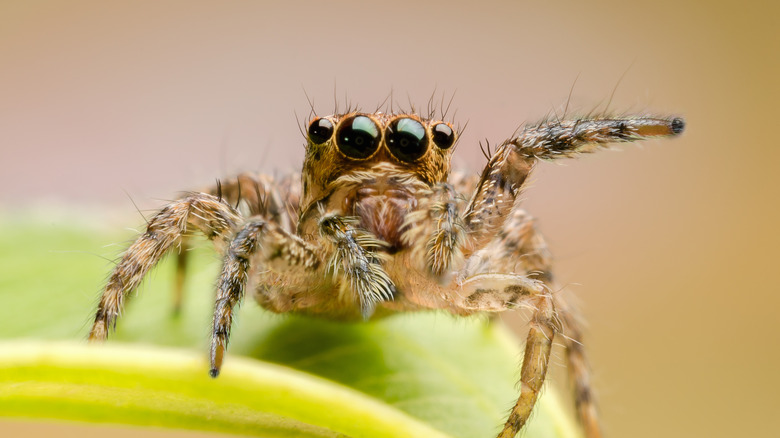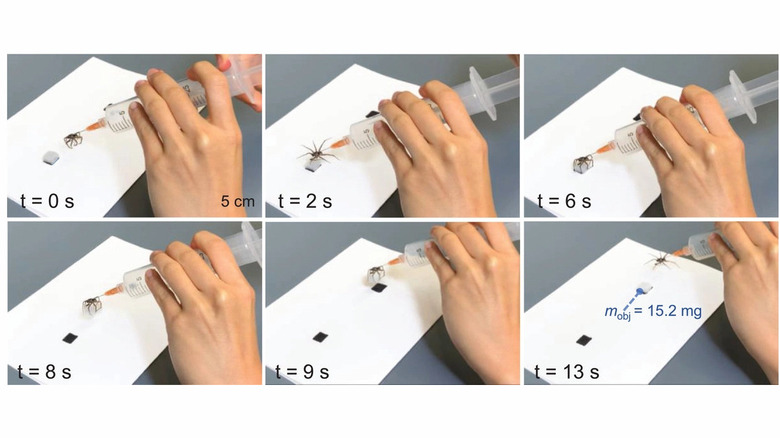Making Robots Out Of Dead Spiders Isn't As Weird As You Think
In addition to keeping annoying pests like flies and moths from overwhelming our homes (sometimes along with larger pests like snails), it looks like spiders could still be helpful to humans even in death. A study on spider necrobiotics (using deceased biological material in place of robotic components) published on July 25, 2022, theorizes that spider corpses have useful, tool-like applications. Researchers realized that the physical nature of a spider's legs — that they operate via air-powered hydraulic pressure rather than muscle control — causes them to settle into a closed position when fully relaxed (or dead).
And thus, by inserting a syringe into a specific area of a spider's anatomy, they can inject a small amount of air to make all of the legs extend at once. Then once the legs relax back into their closed state, they can grip and hold objects up to 130% of the spider's mass (though the numbers aren't as high with larger spiders). So, essentially, they can puppeteer the spider's body to act as a sort of grabber that can then be used to manipulate items of various shapes and sizes — not ideal for the arachnophobic, but potentially helpful all the same.
But why, though?
Ignoring the bizarre nature of this proposed tool (and the moral implications of using a corpse in such a manner, as well as euthanizing spiders for the sake of further experimentation), researchers are confident in its practical applications. First and foremost, the physical nature of a spider's body offers up to eight fingers that can be used for this grabber, which would make gripping irregularly-shaped objects fairly easy. But even so, why not use an extension grabber?
Well, for starters, most extension grabbers only have four fingers, so they may not be as reliable when attempting to pick up complex items. Additionally, manufactured grabbers are often made of harder materials that could scratch or otherwise damage delicate objects. Spider legs, by contrast, are much more delicate and less likely to cause damage — something that also extends to picking up or capturing live specimens like insects — though from the bug's point of view it would probably prefer to see a metal claw bearing down on it.
It's theorized that this same principle of manipulating deceased spiders could extend to other animals, further adapting their hydraulic limb control into new forms of locomotion or other kinds of delicate instruments. That's assuming one has the stomach to use them in the first place.

